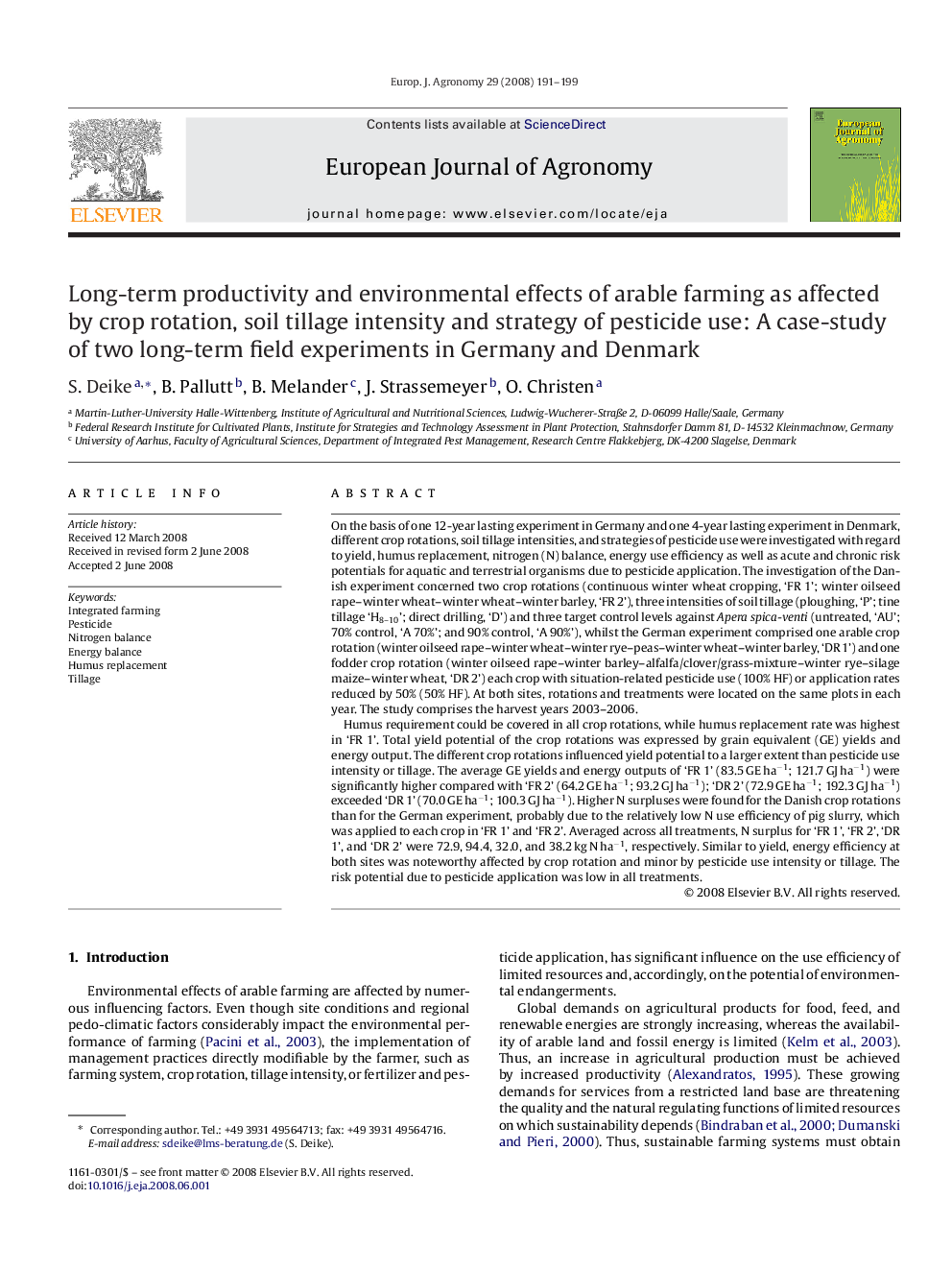| Article ID | Journal | Published Year | Pages | File Type |
|---|---|---|---|---|
| 4509532 | European Journal of Agronomy | 2008 | 9 Pages |
On the basis of one 12-year lasting experiment in Germany and one 4-year lasting experiment in Denmark, different crop rotations, soil tillage intensities, and strategies of pesticide use were investigated with regard to yield, humus replacement, nitrogen (N) balance, energy use efficiency as well as acute and chronic risk potentials for aquatic and terrestrial organisms due to pesticide application. The investigation of the Danish experiment concerned two crop rotations (continuous winter wheat cropping, ‘FR 1’; winter oilseed rape–winter wheat–winter wheat–winter barley, ‘FR 2’), three intensities of soil tillage (ploughing, ‘P’; tine tillage ‘H8–10’; direct drilling, ‘D’) and three target control levels against Apera spica-venti (untreated, ‘AU’; 70% control, ‘A 70%’; and 90% control, ‘A 90%’), whilst the German experiment comprised one arable crop rotation (winter oilseed rape–winter wheat–winter rye–peas–winter wheat–winter barley, ‘DR 1’) and one fodder crop rotation (winter oilseed rape–winter barley–alfalfa/clover/grass-mixture–winter rye–silage maize–winter wheat, ‘DR 2’) each crop with situation-related pesticide use (100% HF) or application rates reduced by 50% (50% HF). At both sites, rotations and treatments were located on the same plots in each year. The study comprises the harvest years 2003–2006.Humus requirement could be covered in all crop rotations, while humus replacement rate was highest in ‘FR 1’. Total yield potential of the crop rotations was expressed by grain equivalent (GE) yields and energy output. The different crop rotations influenced yield potential to a larger extent than pesticide use intensity or tillage. The average GE yields and energy outputs of ‘FR 1’ (83.5 GE ha−1; 121.7 GJ ha−1) were significantly higher compared with ‘FR 2’ (64.2 GE ha−1; 93.2 GJ ha−1); ‘DR 2’ (72.9 GE ha−1; 192.3 GJ ha−1) exceeded ‘DR 1’ (70.0 GE ha−1; 100.3 GJ ha−1). Higher N surpluses were found for the Danish crop rotations than for the German experiment, probably due to the relatively low N use efficiency of pig slurry, which was applied to each crop in ‘FR 1’ and ‘FR 2’. Averaged across all treatments, N surplus for ‘FR 1’, ‘FR 2’, ‘DR 1’, and ‘DR 2’ were 72.9, 94.4, 32.0, and 38.2 kg N ha−1, respectively. Similar to yield, energy efficiency at both sites was noteworthy affected by crop rotation and minor by pesticide use intensity or tillage. The risk potential due to pesticide application was low in all treatments.
